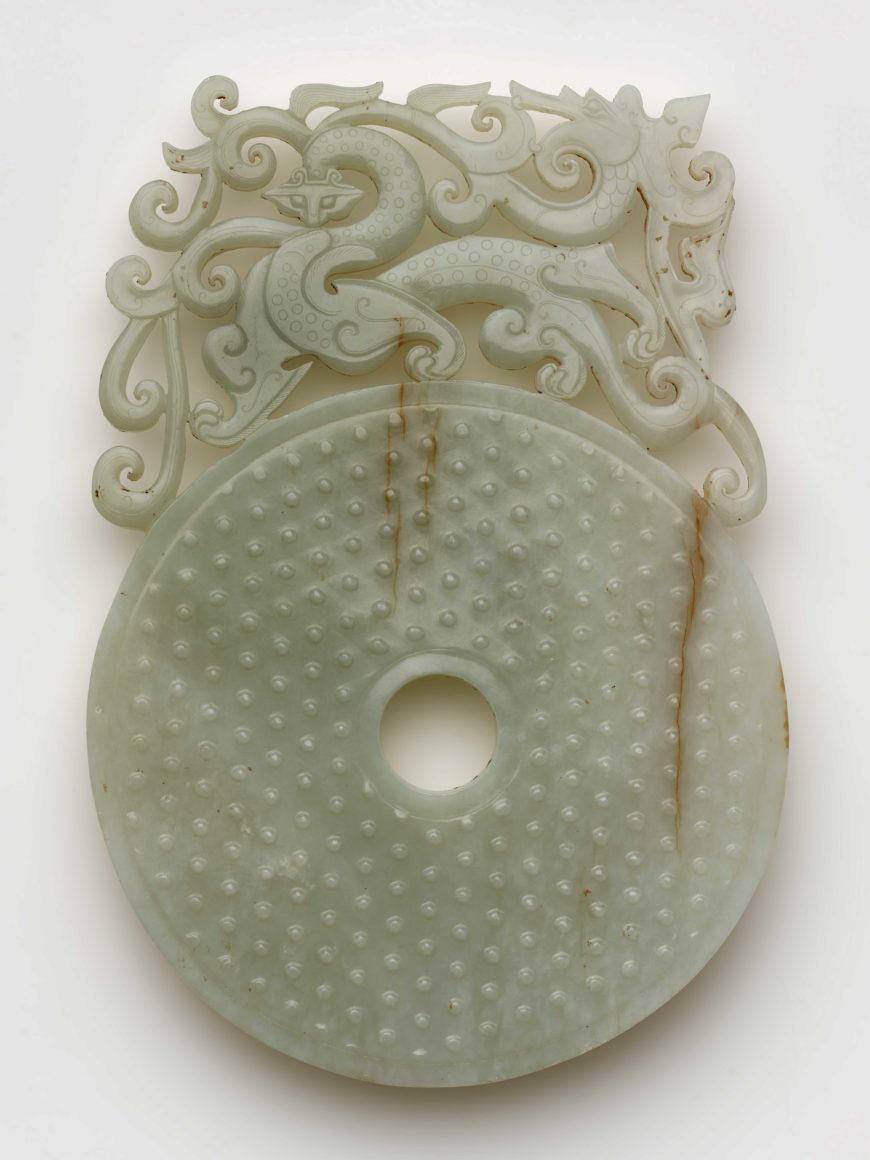
Disk (bi) with knobs, feline, and dragon, Eastern Han dynasty, 100–220, jade (nephrite), China, 22 high x 15.2 x 0.7 cm (Freer Gallery of Art, Smithsonian Institution, Washington, DC: Gift of Charles Lang Freer, F1916.155)
The Han dynasty (206 B.C.E.–220 C.E.) reunified China after the civil war following the death of Qin Shihuangdi in 210 B.C.E. It is divided into two periods: the Former (or Western) Han, when Chang’an (present-day Xi’an) was its capital; and the Later (or Eastern) Han, which ruled from Luoyang—230 miles east of Xi’an. The Han dynasty was a pivotal period in the history of China. During its long reign of almost four hundred years, many foundations were laid for enduring aspects of Chinese society.
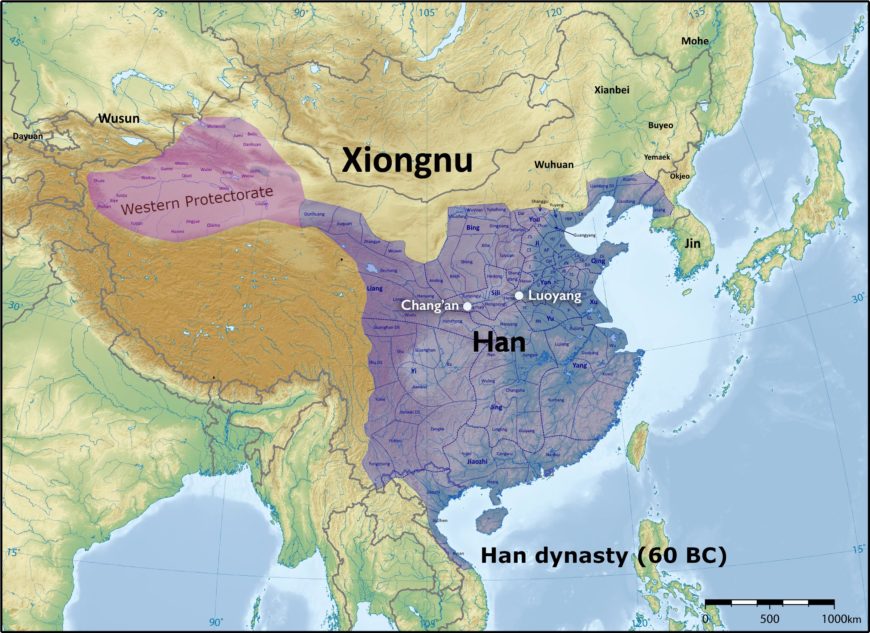
Map of the Han dynasty, c. 60 B.C.E. (map: Qiushufang, CC BY-SA 4.0)
Philosophy and literature flourished during the Han dynasty. Confucianism became the official government orthodoxy. A civil service was created with entrance examinations based on knowledge of Confucian texts—a system that lasted through the early twentieth century. Daoism continued to grow in influence, however, and Buddhism was introduced from India via the Silk Road.
During the rule of Emperor Wu (reigned 141–87 B.C.E.), the Han defeated the Xiongnu, a Central Asian nomadic tribal group that resided west of China proper, and gained control of the regions where the Xiongnu lived. China was now in control of the trading routes across the middle of Asia for the first time. These routes extended to the Mediterranean region and the Near East and were later known as the Silk Road. People that lived along the Silk Road exchanged various goods, as well as ideas, religions, and technologies.
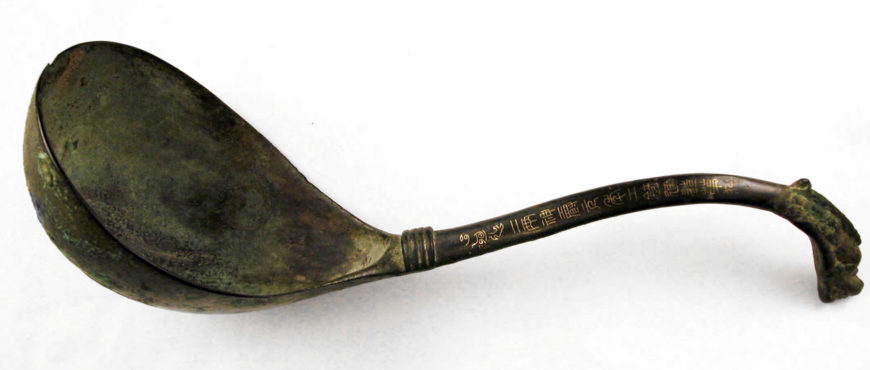
Ladle, Western Han dynasty, dated 61 B.C.E., bronze with gold inlay, China, 34.5 high x 11.5 x 22 cm (Arthur M. Sackler Gallery, Smithsonian Institution, Washington, D.C.: The Dr. Paul Singer Collection of Chinese Art of the Arthur M. Sackler Gallery, Smithsonian Institution; a joint gift of the Arthur M. Sackler Foundation, Paul Singer, the AMS Foundation for the Arts, Sciences, and Humanities, and the Children of Arthur M. Sackler, S2012.9.2495)
Bronzes and jades in the Han dynasty became even more closely associated with affluence and luxury than in any previous dynasty. In contrast to their use in religious rituals during the Shang dynasty, these items were now made for grand festivities and display. One special and well-known type of jade object crafted by the Han people was the luxurious jade burial suit, as jade was believed to have preserving power. At the same time, increased contact with India, Persia, and other countries along the Silk Road introduced new symbols, motifs, and techniques to Chinese art.
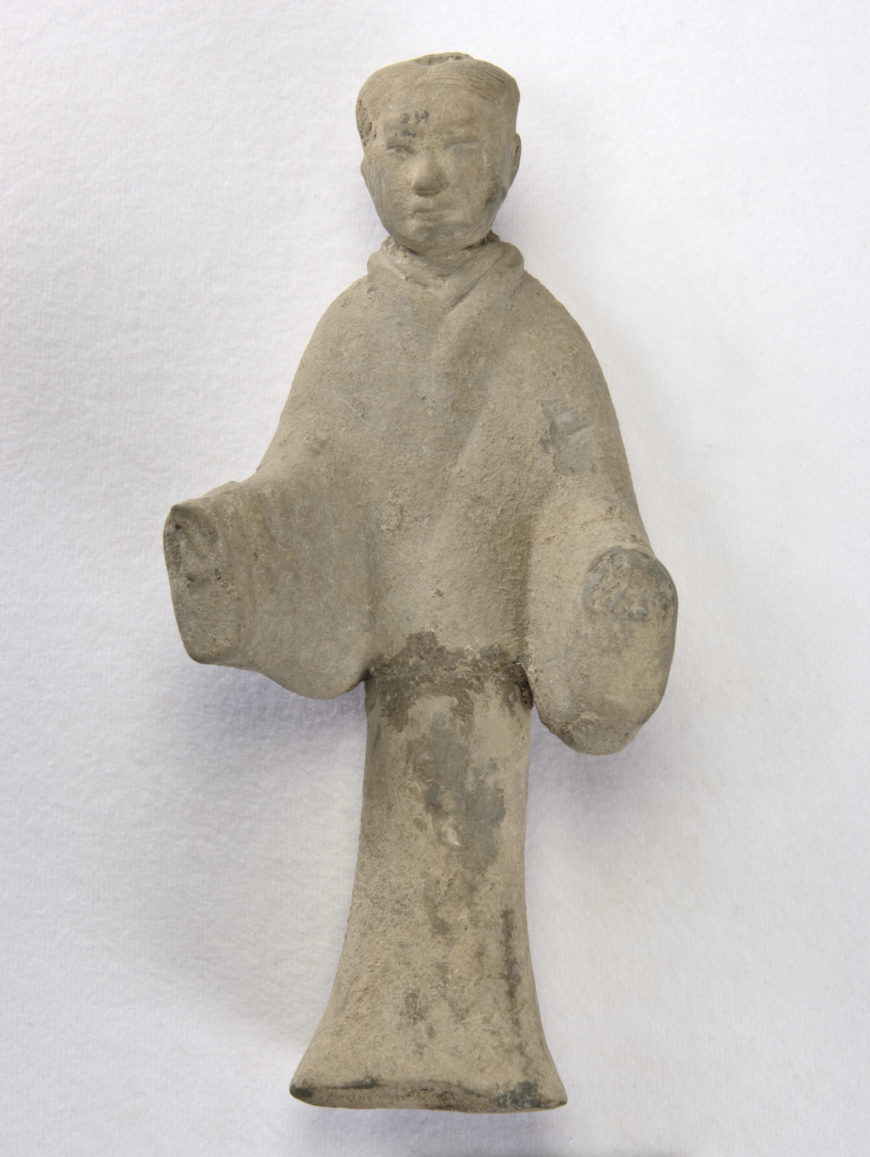
Figure of a female attendant, Qin dynasty or Western Han dynasty or modern period, 221 B.C.E.–9 C.E. or 20th century, Earthenware with traces of black pigment, China, 12.7 x 10 x 6 cm (Arthur M. Sackler Gallery, Smithsonian Institution, Washington, D.C.: The Dr. Paul Singer Collection of Chinese Art of the Arthur M. Sackler Gallery, Smithsonian Institution; a joint gift of the Arthur M. Sackler Foundation, Paul Singer, the AMS Foundation for the Arts, Sciences, and Humanities, and the Children of Arthur M. Sackler, S2012.9.3474)
Similar to many ancient civilizations, Chinese people believed in the existence of the afterlife. The Shang people were known for the ritual of human sacrifice. Starting from the Zhou, clay figures were used as substitutes for living humans, placed in or near the graves. The most famous example of this practice is the terracotta army of Chinese Emperor Qin Shihuangdi. This burial custom became even more widespread during the Han. Varieties of clay models, including servants, musicians, and everyday objects like bowls and utensils, were put in Han tombs for the use of the occupants in the afterlife. Tombs were increasingly modeled on palaces with separate chambers outfitted for different purposes.
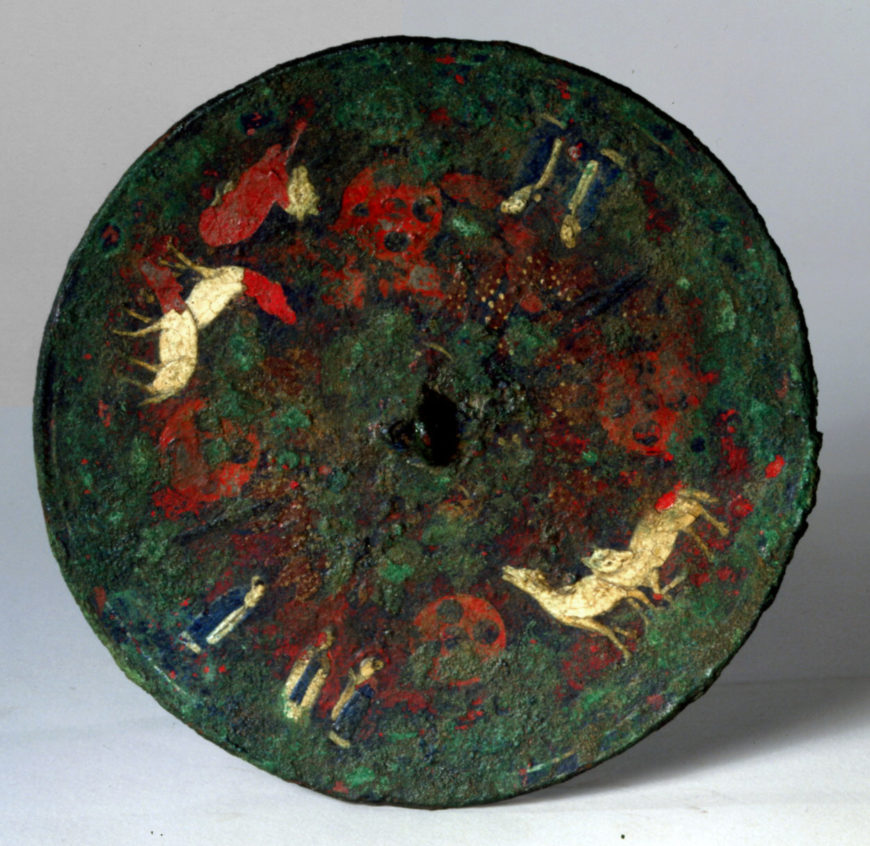
Mirror, Western Han dynasty, 2nd century BCE, bronze, China, 0.4 x 12.6 cm (Arthur M. Sackler Gallery, Smithsonian Institution, Washington, D.C.: The Dr. Paul Singer Collection of Chinese Art of the Arthur M. Sackler Gallery, Smithsonian Institution; a joint gift of the Arthur M. Sackler Foundation, Paul Singer, the AMS Foundation for the Arts, Sciences, and Humanities, and the Children of Arthur M. Sackler, S2012.9.1966)
Painted narrative scenes started to appear on tomb walls as well as clay and lacquer objects. Tomb tiles and textiles were also favored media for pictorial depictions. Themes ranged from Confucian ideals and historical events to Daoist mythology and auspicious omens. Thanks to the invention of paper, calligraphy as an art form started to thrive in the Han dynasty. Different script styles emerged. By the end of the Han dynasty, the squared lishu script, with heavily stressed horizontal strokes, was commonly used by government clerks and became the standard form of writing.
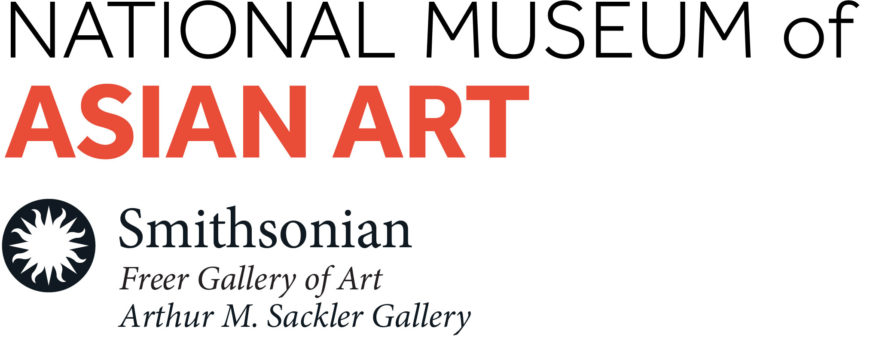 This resource was developed for Teaching China with the Smithsonian, made possible by the generous support of the Freeman Foundation
This resource was developed for Teaching China with the Smithsonian, made possible by the generous support of the Freeman Foundation




